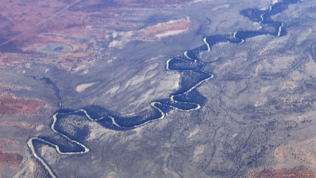
Sypnosis
Rivers have a crucial role in water supply for communities and economic sectors, such as agriculture, energy management, and tourism. In Australia the larger river system is the Murray-Darling Basin, in southeast Australia. The MDB supports over 7000 agriculture businesses, totalling 40% of Australian farms, and contributes tens of billions of dollars annually to the Australian economy.
River discharge varies depending on regional and global climatic processes such as temperature and rainfall. Previous studies have identified that river discharge in the MDB in the past 100,000 years has been more directly related to temperature changes than changes in precipitation. This is a similar behaviour seen in other Southern Hemisphere regions, such as Rivers play a crucial role in supplying water to communities and economic sectors such as agriculture, energy management, and tourism. In Australia, the largest river system is the Murray-Darling Basin, located in the southeast. The MDB supports over 7000 agricultural businesses, accounting for 40% of Australian farms, and contributes tens of billions of dollars annually to the economy.
River discharge varies based on regional and global climatic processes, including temperature and rainfall. Previous studies have shown that river discharge in the MDB over the past 100,000 years has been more closely related to temperature changes than to variations in precipitation. This behaviour mirrors that seen in other subtropical Southern Hemisphere regions, such as the Atuel/Diamante Basin in Argentina, suggesting that large-scale changes in atmospheric circulation may have influenced past hemispheric shifts in river discharge.
Understanding how river discharge will change due to climate change is vital for guiding decision-makers on mitigation and adaptation strategies in response to greenhouse warming scenarios.
Aims
This project aims to assess the large-scale circulation processes linked to changes in historical river discharge across the MDB and how they are projected to change in a future climate. The approach will make use of paleoclimate data from the Holocene period, historical records, and model simulations.
Understanding how river discharge will evolve in a warming climate can help make informed decisions about allocating water resources and planning for water storage.
Experience required
Background in climate science, physical oceanography, meteorology, physics, mathematics, or equivalent area. Desirable knowledge of statistical analysis and technical skills with coding and visualisation packages such as Python, Matlab or equivalent.
Supervisors: A/Prof Laurie Menviel & A/Prof Andrea Taschetto
